Travel writers share their best discoveries (and disappointments)
Simply sign up to the Life & Arts myFT Digest -- delivered directly to your inbox.
William Dalrymple
Discovery: During the past year I’ve been travelling around India and Pakistan, working on a book about the violent seizure of India by the East India Company. It is the story of how a militarised multinational destroyed and replaced the rich, mighty and elegant empire of the great mughals.
As part of my research, I’ve been visiting places where this history took place — the battlefields and ruins, the mosques, Sufi shrines and temples, the paradise gardens and pleasure grounds, the British barracks and the Mughal havelis and forts.
The year’s highlight was a pair of summer treks through the valleys of Kashmir — first in the area within the Indian line of control; then in those parts of the old Kashmir state lost to Pakistan in 1947.
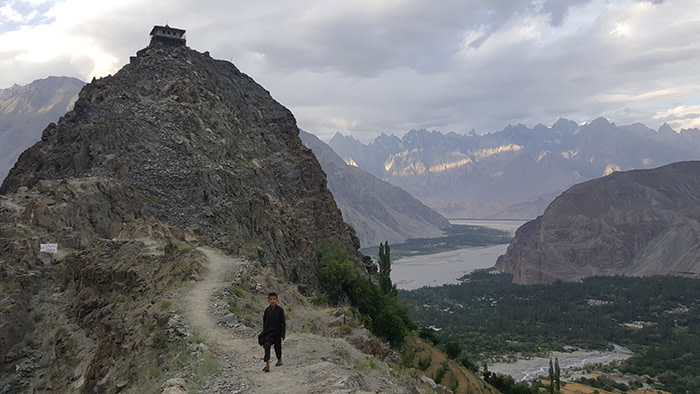
Srinagar was as fascinating as ever. Laying in bed on a houseboat on the Nigeen Lake, I could see the reed-cutters and fishermen and lake gardeners through the wooden frame of the houseboat windows. After breakfast, I drove into the old city of Srinagar. There, for all the remarkable wooden architecture, I would find myself in a more volatile world: several times, curfew was declared and everything closed behind fretwork shutters. Pakistan is renowned as a violent and unstable country, but the Pakistani half of Kashmir proved more peaceful and seemed almost demilitarised.
I took my family to see Baltistan — the rarely visited half of Ladakh that is now in modern Pakistan, and it was there that we found what we all agreed was our number one travel discovery of the year: the amazing Khaplu Palace hotel. Locally known as Yabgo Khar, the palace looks like the small cousin of the Potala in Lhasa, a timber-laced Tibetan structure, but decorated with gorgeous wooden Mughal-style fretwork and arcading. It was recently restored by the Aga Khan Trust for Culture and is now probably the most comfortable and stylish Himalayan hotel I have stayed in — and also the most beautifully situated: surrounded by snowy peaks on one side and the deep ravines of the Shyok and Indus rivers on the other. You can ride out in some of the most dramatic landscapes in the world, then come home to superb Balti cooking made from locally grown ingredients. It is a wonder — go quick before everyone else discovers it.
Double rooms at the Khaplu Palace cost from $120; serenahotels.com. Wild Frontiers can arrange tours to the area
Disappointment: A trip to the far north-west coast of Scotland in early summer — a fabulous coastline, but it rained solidly from the moment we crossed Glencoe until the second we regained the greenery of Perthshire: a dreich week of low light, cold wind and foggy mornings. Yet even here there was a silver lining in the form of an incredible restaurant: the Whitehouse in Lochaline is one of the best places to eat seafood in Scotland: small, intimate and superbly well run with locally caught fish and locally foraged accompaniments.
Pico Iyer
Discovery: Dog-mushing across frozen ponds as winds whip snow into fast-moving blizzards? Driving snowmobiles through near-impassable woods in minus 39C? It doesn’t sound much like me, a failed sportsman unable to swim or ski or even ride a bicycle.
But at Winterlake Lodge, a 45-minute ride in a six-seater plane from Anchorage, Alaska, every one of those activities became irresistible. Last January, my wife and I settled into a spacious, two-bedroom cabin with views across miles of emptiness to unnamed snowcaps on one side and across a lake ringed with spruce and birch on the other. The place is run by a hearty family that includes two Cordon Bleu chefs, a yoga instructor and an expert outdoorsman. Their nearest neighbour is 54 miles away (and the closest road 98 miles).
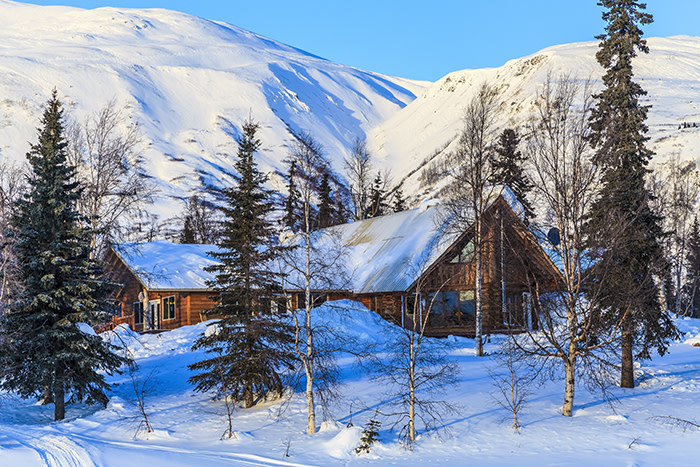
Our silent flight, across tundra and past 6,190m-high Denali, had ended with a landing on skis in a wilderness where no human habitations were visible. The tracks of the Iditarod dog-race run right through the heart of the property. But it’s other things that really lingered from our stay there. The sun turned the carpeted library in which my wife practised yoga every morning into a box of light, even as champagne bottles exploded in one corner from the cold. Home-made muffins were set out for us at every hour of day and night to top up meals of exceptional reindeer steaks and salmon ravioli. We were living almost “off the grid” — no phone reception or TV — even as we were surrounded by L’Occitane toiletries and very fine wine. At night, under a full moon, we watched explosions of stars in the ringing stillness, washes of the Northern Lights swirling through the heavens.
Even for a city-lover as unregenerate as myself, Alaska upends one’s sense of scale, of normality, of self. When the two of us arrived at Winterlake, we were the only guests in residence, and seven staff members were ready to take us on helicopter rides to glaciers, bring us Earl Grey tea, show us how to make ginger panna cotta with apple crumble.
If the beauty of travel is going, inwardly, to places you’d never visit otherwise, then for someone like me, who loves Isfahan, Beirut, Havana and Hanoi, Alaska is the perfect complement.
A three-night stay costs from $5,525, including flights from Anchorage and activities; withinthewild.com
Disappointment: I was born in Oxford, and spent too many of my first 21 years there, so I always assumed that Cambridge had to be the quaint, pretty English university town to visit. But this year I finally went to the other place, and found too many colleges clustered around a tiny centre, the Backs barely visible from afar — and not a Magdalen deer in sight. I’m shocked and embarrassed to admit this, but the one thing enduring two days in Cambridge taught me was to feel greater pride in my hometown!
Jan Morris
Discovery: My best travel experience of 2017 was almost hallucinatory. It was going up Snowdon — Yr Wyddfa to the Welsh — on its venerable mountain railway (pictured below).
I live within sight of the mountain and I have repeatedly walked and climbed it, but I had never before experienced the train. It was to be its very last journey before the service closed for the winter, and it was jam-packed with a marvellously polyglot, multi-racial multitude of passengers. I thought it was like a journey in science fiction, up some mountain of the mind.
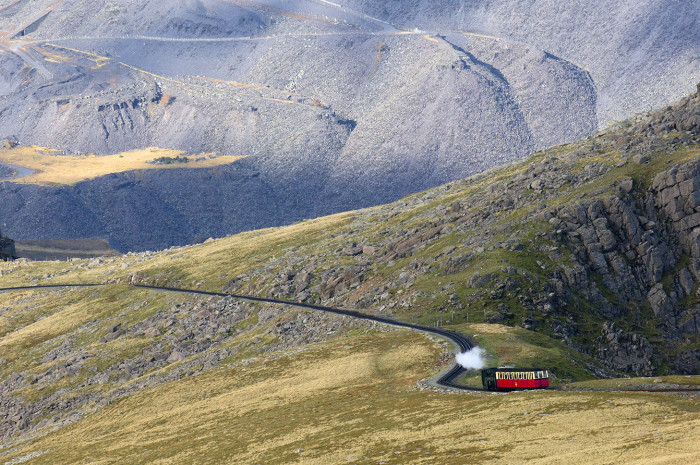
As we chugged precipitously up the mountain even the bare landscapes outside our windows were improbably speckled everywhere with climbers and hikers and even bikers, and when we got to the top, and stepped out into the summit café, it seemed to me that I had entered some extraordinary new world — a laughing, sausage-roll-eating, noisy world of illusion.
Through a window at the top of the café one could see the actual summit of the mountain, a rock half-hidden in mist, and around it, in a suitably illusory kind of climax, burly dim figures clambered mysteriously through the half-light. We did not stay long. The very last train was leaving, and so, polishing off my own sausage roll, I was conveyed reluctantly back to reality.
The railway reopens in March, returns cost from £23; snowdonrailway.co.uk
Disappointment: I fear my chief disappointment was this; that in my 91st year for the first time in my adult life I never set foot outside Britain!
Sophy Roberts
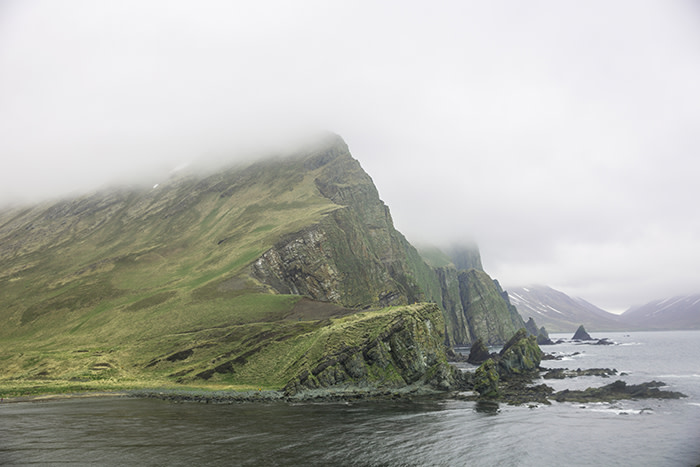
Discovery: It was June, and the mantle of sea ice had passed, allowing our little expedition ship, the Spirit of Enderby, to approach Medny Island — one of Russia’s Commander Islands. Darkly alluring, this is about as far as you can go in Russia — the silent final ellipses at the end of the vast country’s turbulent story. The Commanders are the Russian end of the Aleutians, the island chain that hangs like a necklace between the coasts of Kamchatka and Alaska. I was 180 nautical miles from Kamchatka, about the same from Attu, the westernmost of the US-owned islands, and in the same timezone as Auckland. Cruising the coastline of uninhabited Medny, I had the feeling I like most about travel, of being at the end of the Earth.
The ship was travelling from Kamchatka to the Commanders and then south through the Kurils chain, on a two-week trip skippered by New Zealander Rodney Russ — a Nansen-like character with a Hemingway pose. Surrounding us were high cliffs funnelled with waterfalls and crowned in milky fog. Cormorants were nesting on the rock stacks. When the birds turned their black necks into the light, they revealed a sheen of purple. For a moment, this island could have been Hawaii — the velvet greens, the moody swings of sun and shade.
It is a paradise for birds, with the Commanders providing a haven during some of the grandest migrations of the natural world. Among them, bar-tailed godwits, which can cover close to 7,500 miles across the Pacific in nine days flat, travelling between the wind-blasted northern tip of New Zealand to the sea ice of north-east Siberia. Scores of northern fulmars wheeled in broad arcs, breasting the wind. There were tufted puffins with bellies like barrels, wings whirring in heavy flight.
I came for the natural history, and found not just North Pacific bird life, but one of the truest wildernesses on the planet, with rookeries of northern fur seals and Steller’s sea lions. On an empty beach, I stumbled upon the skeleton of an Arctic fox curled up on the edge of the grass, like a dog waiting for its owner to return home. But no Steller’s sea cow — creatures described by 18th-century naturalist George W Steller as 30ft in length, with meat that tasted like beef. They produced milk like a cow’s, and fat like butter, with one sea cow able to feed 40 shipwrecked sailors for two weeks. Just 27 years after Steller encountered them (himself a castaway), these toothless giants were rendered extinct by fur-hunters in need of an easy meal. If my discovery of the year was that this wilderness existed, I was also reminded of what has already passed.
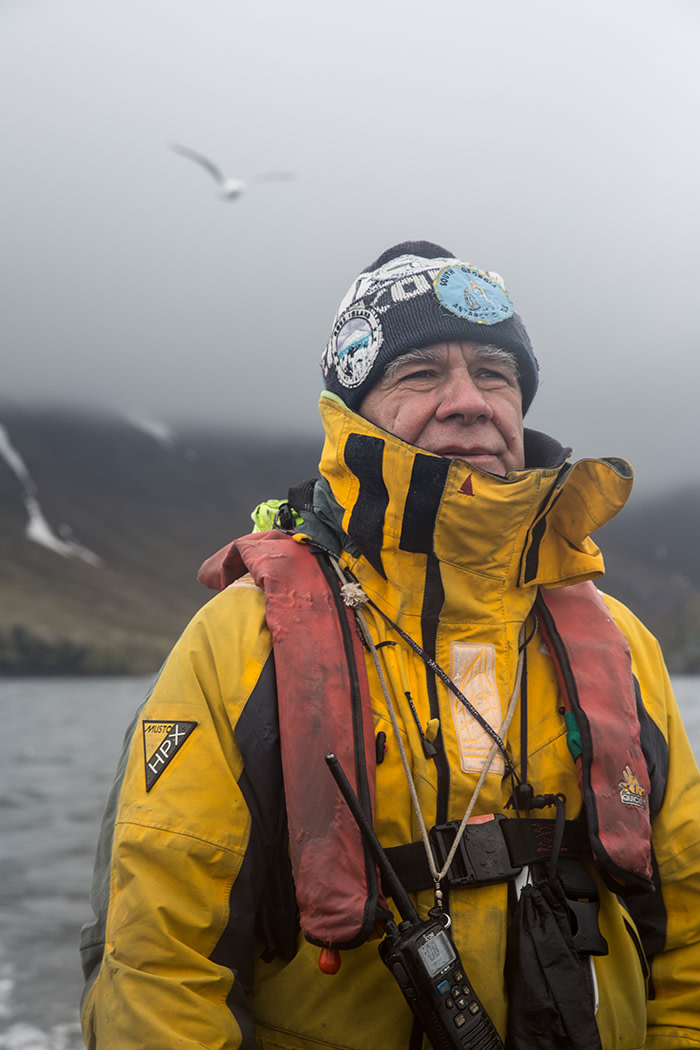
Rodney Russ is the founder of Heritage Expeditions (heritage-expeditions.com). Its next Commander Islands trip departs June 14, and costs from $7,300 per person
Disappointment: In May I visited Rome, staying at the most spectacular private palace-to-rent, called Palazzo Odescalchi. I was living the dream, among Van Dycks and Meissen porcelain. I didn’t move for the first day. Eventually, I pulled myself out of this exquisite fiefdom for a walk, to take in the ancient grandeur of the Colosseum. This time, reality hit: instead of men dressed up in centurion outfits, I felt the presence of modern-day soldiers armed and ready for any security breach. Another reason why, for 2018, I will shut myself away in a private home, or keep to travelling the world’s empty places instead.
Tim Moore
Discovery: One cloudless morning late in August, I drove into Idaho with a dull headache — the legacy of having just crested the Rockies, and having done so in an open-sided, tirelessly deafening 1924 Ford Model T. At the tail-end of my solo, slo-mo, coast-to-coast journey, I had developed a connoisseur’s appreciation of America’s big country. The bleak High Plains, the green seas of corn, the steepling grain elevators that wobbled distantly out of the heat haze like prairie cathedrals. But Idaho offered a whole new order of lonesome grandeur, one that peaked after I rumbled past two adjacent signs: “OPEN RANGE NEXT 125 MILES” and “PAVEMENT ENDS — MINIMUM MAINTENANCE AHEAD”. All day I trailed chalk dust across epic plateaux edged with crevassed bare mountains, their silhouettes smudged by smoke from a distant wildfire. I bashed my klaxon horn for company — ahoooga! — and sent murmurations of starlings into the garish blue sky. I skittered across cattle grids painted with stars and stripes, past luminous yellow gorse, through desolate stands of hotly aromatic Ponderosa pine. My own private Idaho, a final outpost of the unfenced, untamed wild west. My mind was blown and my headache went with it. In five hours I encountered a solitary fellow vehicle. Its driver flagged me down, then urged me to accept a free meal at her son’s diner, a mere 320 miles westward. “Just sit down and tell them, ‘John’s mom said, feed me.’ ”
I stayed in Arco, at a motel flanked by derelict stores and gas stations, another Pompeii of America’s small-town pomp. This was the first settlement ever illuminated by nuclear power, and shortly afterwards the first victim of a fatal reactor meltdown, when an explosion killed every technician in the control room. Yet Arco remained a bastion of the stubborn pride that once defined the American dream, and a golden age that launched 15m Model Ts. At the diner up the road I ordered the house special: an atomic burger. Across the street stood the conning tower of a decommissioned nuclear sub. Behind this reared a hefty bluff, its loftiest crags engraved with colossal double digits by several generations of high-school graduate classes. How moved I was to spot 24, the year my Model T rolled off the Detroit line.
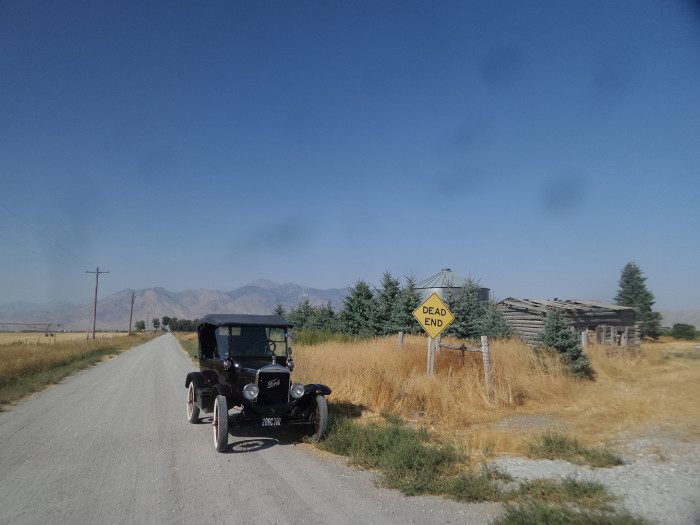
Idaho’s place in my heart was secured three days later, when I crossed into Oregon through the Owyhee Desert. Of the 22 states my Model T spluttered and creaked through, this was the only one it didn’t break down in.
For information see visitidaho.org
Disappointment: Had I travelled a vast distance to behold August’s solar eclipse, as millions did, I’d doubtless insist that my life changed forever as I stood in that Yellowstone Park layby with two pinholed paper plates held to my tilted face. But I just kind of blundered across the thing, so take it from me that five seconds of tepid shade and a fuzzy cardboard overlap is a poor basis for epiphany.
Paul Richardson
Discovery: To look at, Elkano is nothing to write home about. The restaurant squats on a corner facing the traffic on the winding coast road from San Sebastián, Spain. Its wood-lined dining room, looking as if it were last decorated in the late 1980s, is nondescript if comfortable.
Then again, no one comes here for the interior design. Founded 53 years ago by Pedro Arregi and his mother Joxepa, Elkano, in the Basque village of Getaria, has quietly blossomed into a world-class restaurant that treats fish the way it ought to be treated in 2017 — as a precious, increasingly threatened resource, and the last major food group still largely sourced in the wild. The restaurant’s raw material not only proceeds from artisan fishermen in Getaria harbour, but conforms to Elkano’s rigorous criteria of seasonality and sustainability. There are no daredevil culinary gymnastics here, but simplicity and supreme respect for the product.
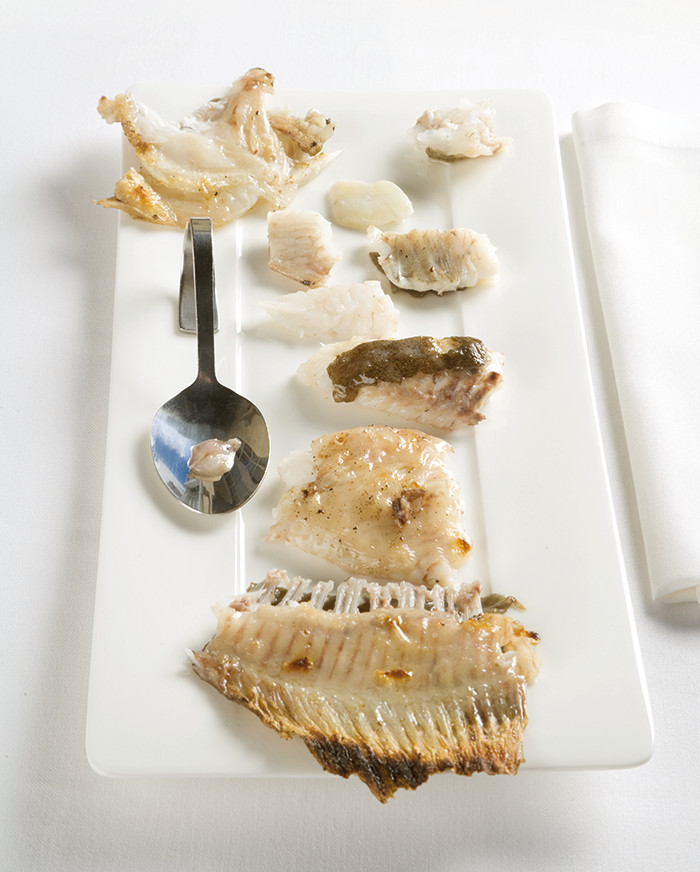
Aitor Arregi is the son of Pedro and Elkano’s public face. Lean-faced and rangy, with an impassioned seriousness and a deep vein of hospitality that are both genuinely Basque, Aitor is a philosopher of fish and fishing who talks of “marine terroir”, “naked flavours” and “reading the environment”.
One weekday lunchtime a few months ago, Aitor sat me down near the kitchen door, poured me a glass of white txakoli from a nearby vineyard and brought me things to try: a plateful of shrimp, sea-sweet and iodine-rich; a fried liver of red mullet, like a tiny foie gras; and three kokotxas (hake tongues), sublimely unctuous in their three different preparations.
But the dish that made this my most revelatory meal of the year was the whole turbot grilled over holm-oak coals — a formula invented by Aitor’s father. He dissected the fish before my eyes, inviting me to distinguish between the meaty and gelatinous parts of the pearly white flesh, the bone marrow and cheeks, the head, fillets, the faintly caramelised underside and the crackling-crisp skin. “Naked flavours” indeed. Compared with the tip-top turbot that day, most fish is simply over-dressed.
For details see restauranteelkano.com
Disappointment: Ilha da Berlenga sounded irresistible: a secret island off the Portuguese coast where there was only a tiny fishing village, no cars or WiFi signal, and just one simple pousada. The reality was cruelly different. On a weekend in August the island was a dusty rock in the cold Atlantic. The simple pousada was a miserable, overpriced dump. The early mornings on Berlenga were quiet until a succession of ferries brought hundreds of trippers to swarm noisily over the island. Worst of all was the plague of seagulls. The island is home to a huge and uncontrolled colony, and there was no escaping their evil stares, the stench of their guano, or the Hitchcockian flocks that circled above me on my morning run. My one consolation was the easy-drinking vinho verde served in the island’s only bar. As they say on TripAdvisor: “never again”.
Horatio Clare
Discovery: Lübeck! Why did no one tell me, I thought, stupidly, standing on the cobbles behind the magnificent Marienkirche, the air frosty, the fog clouds blue and low above tall spires? A free city from 1226 until 1937, firmly astride the ancient salt road from Lüneburg — thus taking a piece of every pinch that reached Hamburg, the sea and the wide Baltic — Lübeck is a little, diverse and worldly city where the river barges met the sea’s ships. We ate in a 17th-century captain’s grand dining room, the barely changed and legendary Schiffergesellschaft, and slept sweetly in the Klassik Altstadt Hotel.
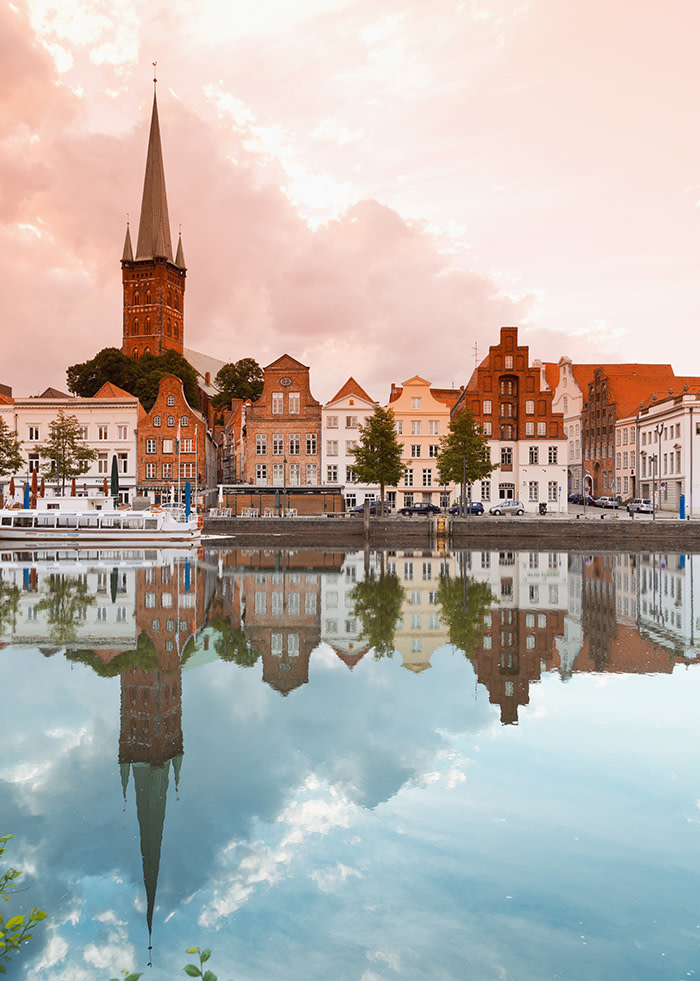
The Marienkirche was a place of pilgrimage for me. I followed the footpaths taken by Johann Sebastian Bach late in 1705, when at the age of 20 he walked across Germany, from Arnstadt to Lübeck, to study alongside the Marienkirche’s organist, Dietrich Buxtehude. To understand the city, enter the church as Bach did, eyes raised, hat off, ears a-prick. The building is the first and finest example of French cathedral Gothic in Germany, a soaring ship of space and stone. It was hammered by bombs during the war and rebuilt after it. But the bells have been left where they smashed down, great splayed bronze shatterings, railed off and spot-lit. Bach is shown on a bas relief plaque, standing awkwardly, taking notes on Buxtehude, who sits at his organ, apparently dreadlocked but probably bewigged. The nation’s heavenly gifts and hellish legacy are right here.
See luebeck-tourism.de. Doubles at the Klassik Alstadt cost from €128; klassik-altstadt-hotel.de
Disappointment: A sad fate for an old friend, the lovely Ram Inn in Cliviger, Lancashire. My family have long been fans of this grand pub, with its outside tables, views to Thieveley Pike and a patch of field for games. But this time we were served three fairly rotten meals, surely a symptom of how hard it is, even for successful pubs, to retain good chefs.
Lucia van der Post
Discovery: When most people think of a safari they think of Africa’s vast savannahs, of Kenya’s Maasai Mara, of South Africa’s bushveld. Far fewer know of a little jewel of a game reserve that lies on South Africa’s north western border, right up against Botswana. It’s called Tswalu Kalahari Reserve and it was created by the late Stephen Boler out of what were essentially arid, subsistence farms. I had been entranced by its austere beauty when I first saw it some 25 years ago alongside Boler. Out of the degraded land he had created a wonderful game reserve. He reintroduced wildlife that had once belonged there, most particularly the endangered desert black rhino, which love its dry thorny bush, and the black-maned Kalahari lion. And then one sad day he had a heart attack, and so in 1998 Nicky and Strilli Oppenheimer took it on.
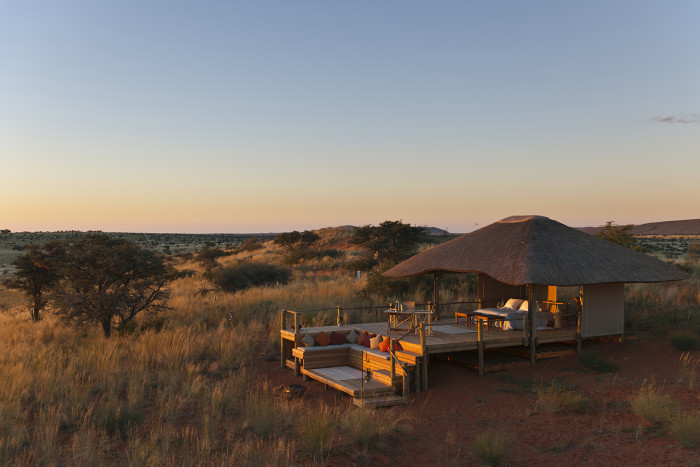
This year I saw it again for the first time since they bought it. What a transformation. They stopped the hunting (Boler had kept a small section aside for that purpose) and they’ve bought more land, which gives it more biodiversity as well as the grand beauty of the Korannaberg mountains.
Today it ranges over 110,000 hectares, the largest private game reserve in South Africa. The Oppenheimers see it as primarily a conservation project, the aim being to “restore the Kalahari to itself”, with some (very upscale) tourism thrown in to help it on its way. Here there are never more than 30 tourists roaming its landscape at any one time. Tswalu is way off the usual tourist routes but it is worth taking the path less travelled, for here is a much less conventional grandeur, an utterly different landscape, more remote, more wild, as well as animals that are hard to see elsewhere (roan, sable, the desert black rhino and the black-maned Kalahari lion). Stephen Boler would be proud.
From ZAR14,500 (£800) per person per night, all inclusive; tswalu.com
Disappointment: Beware the taxi drivers of Marrakesh. In their eagerness to please and to get work, they all say they know exactly where it is you want to go. Believe me, they don’t. This year I spent an hour in a taxi, passing the same sights three or four times, to reach a dinner destination that turned out to be five minutes from my hotel. If you find a good one, keep him and his telephone number very close indeed.
Tom Robbins
Discovery: The call of the wild seems widely felt these days. Television programmes dispense survival skills and inspirational tales of downshifting couples. The bestseller lists have unlikely hits about shepherding, birds of prey, remote islands. Social media is full of adventurers’ inspiring photographs and motivational advice urging readers to unshackle themselves from their desks and #GetOutside.
Finally, the temptation was too much: the mountains were calling and I had to go. The only problem was that I live in south-east London, and with a full-time job and young family, the longest I could realistically unshackle myself was about 12 hours. I began to research my micro-adventure, working out the fastest and most efficient route from London to the mountains. And so, one autumn day, I caught the 7.30am train from Euston to Windermere in the Lake District. The plan was to run from there to Penrith, 20 miles to the north, via High Street, a path established by the Romans along the long, flat summit ridge of a mountain (the peak itself thus now also called High Street).
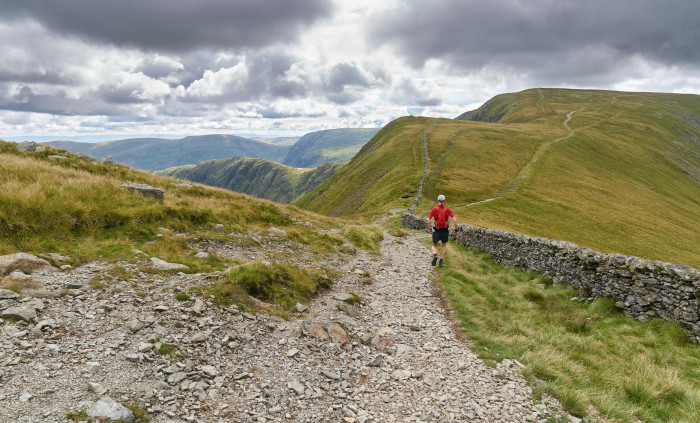
Of course, when I got off the train at 10.50am, it was raining. Yet my spirits stayed high as the houses quickly gave way to dry stone walls and fields. Soon I was climbing a stony track up the flanks of Ill Bell and from there on to High Street proper. The clouds swirled, sometimes parting to create ephemeral tunnels through which I glimpsed distant lakes, forests or summits.
I had seven hours to make it to Penrith — three miles per hour seemed easily doable, even to a four-times-per-year jogger like me — but after I passed the summit cairn of High Street, things began to go downhill in every sense. The more tired I grew, the more I struggled with basic map-reading. As dusk fell, a series of geographical embarrassments left me racing the clock, until I wound up in a dense wood at the end of a dark track, my route into Penrith blocked by a rushing river. I stood on the bank, agonising over whether to risk wading across while imagining the southbound train rushing towards Penrith.
In the end I was rescued by some dog-walkers, who pointed me in the right direction; I made the 18.07 train with minutes to spare. I slumped into my first-class seat (my other discovery: £18 more than standard but with dinner and as much as you can drink included), happily sated by my day-trip adventure, exhausted enough not to care what the other passengers thought about the mud-caked wretch in their midst.
See virgintrains.co.uk for times and prices
Disappointment: At Geneva airport I learnt a hard lesson about car hire. My Hertz rental was parked in a tight space in the half-light of the multistorey car park waiting for collection. I briefly walked around it to check for damage, but because of the other cars inches away, I couldn’t easily bend down to inspect the sides properly. Plus we were late and the children were crying, so we loaded up and drove off.
The following morning, as soon as I saw the car outside our holiday house, I noticed the big gash along the bottom of the rear door. Of course, by this point it was too late. I tried to put it out of mind, but after two weeks of nagging worry I returned the car to be handed a bill of £1,200. The moral: always move the car into a well-lit spot with lots of space before you examine it.
Martin Fletcher
Discovery: It is not necessary to fly halfway round the world to find really special places, or to experience sublime pleasure. I’ve been to Kenya, Congo, South Africa and Albania to write travel articles this year, but I found my own little paradise scarcely a two-hour drive from our home in London: a hidden, roadless river valley on the sparsely populated Suffolk coast. I hesitate even to name it lest I have to share it with others, but I suppose I must. It is called the Butley river.
On a hot summer day my wife and I cycled there from the village of Orford, along a single-track lane with glorious views across empty marshland to the distant sea. The lane subsides into a sandy track that ends by an isolated smoke house at the river’s raised bank. On the far side of that bank, a couple of hundred yards downriver, is a wooden jetty where, at weekends, a single tiny rowing boat provides a ferry service for occasional walkers and cyclists that dates back to the 16th century and is reputedly the oldest in Europe.
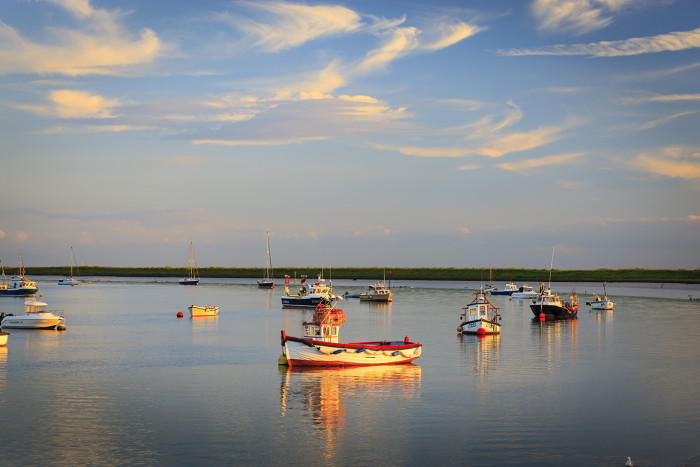
There was not a soul in sight, just the odd moored sailing boat and gently undulating green fields stretching away from either bank. We stripped off, and plunged in, leaping off the end of the jetty. The river is tidal and the water salty, but thoroughly invigorating and a delight to swim in. A seal joined us, popping up in front of us, behind us, staring at us with its round, black, liquid eyes. We were able to approach to within a yard or two before it dived again.
Afterwards we picnicked in the grass, or dozed in the deep silence and the sun. We were imbued with a profound sense of harmony and wellbeing. Yes, I thought: when eventually I die, this is where I’d like my ashes to be scattered.
For details on the area see orford.org.uk; the Butley Ferry reopens after a winter break on March 31
Disappointment: Flying over South Africa’s Kruger National Park in a helicopter, we spotted two dead rhinos and landed. I wish we hadn’t. Their horns had been hacked off by poachers. Their bloated carcasses were crawling with flies and maggots. Their thick grey hides were streaked with the excrement of vultures, and the stench was appalling. Soon the hyenas would be moving in.
I had seen poached rhinos before, but that did not lessen my revulsion. It never fails to disgust me that amid such spectacular natural beauty these magnificent creatures can be reduced to something so rank and vile — simply so their ground-up horns can be flogged as a bogus cure for impotence or hangovers, or proffered like cocaine at swanky dinners in distant China. One day, decades hence, we will look back and ask how on earth we let this happen.
Claire Wrathall
Discovery: Nine miles north of Aix-en-Provence, within sight of Mont Ventoux, Château La Coste is a 17th-century fortified farmhouse surrounded by vineyards, olive groves and lavender fields.
Belfast-born property developer Patrick McKillen, part-owner of London’s Claridge’s, Connaught and Berkeley hotels, bought it as a home in 2004 and since then has added striking buildings by several of the world’s most distinguished architects. Jean Nouvel built the gleaming winery, and Frank Gehry the music pavilion. Renzo Piano designed the gallery in which to showcase works from McKillen’s collection of photography, and Richard Rogers one for paintings. An amphitheatre by the late Oscar Niemeyer may yet be built among the vermentino vines.
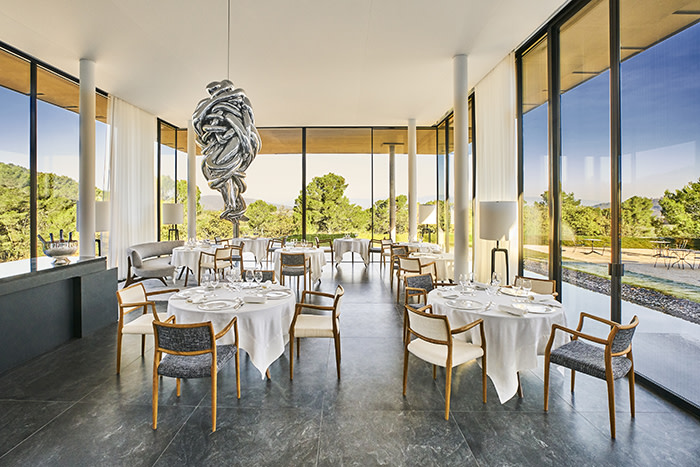
The most prominent structures, however, are the work of Tadao Ando, whose contributions range from the so-understated-as-to-be-almost-invisible main gate to the meditation pavilion, as well as an art centre to complement an ever-evolving trail through the woodland, past more than 20 works by Ai Weiwei, Louise Bourgeois, Alexander Calder, Tracey Emin, Liam Gillick, Andy Goldsworthy, Lee Ufan, Sean Scully, Richard Serra, Hiroshi Sugimoto and others. It opened to the public in 2011.
This year three restaurants opened on the site — Argentine master of flame-grilled meats Francis Mallmann’s first European outpost, and two by Gérald Passédat, whose Marseille flagship has three Michelin stars — as well as an outstanding 28-suite hotel, Villa La Coste.
This time the architect was the Marseille practice Tangram, whose unshowy yet monumental design sits well in the landscape and makes reference to several masters of French Modernism, not least Jean Prouvé, two of whose influential 1940s prefab houses have been reconstructed facing each other across the chateau’s elegant vegetable garden. Between them stands an ornate 18th-century tea pavilion shipped from Vietnam, where, it transpires, all the Modernist-influenced bespoke furniture in the hotel was designed by the Ho Chi Minh City-based brand District Eight. Everything connects! Which perhaps explains the unusual atmosphere of serenity, order and perfection that pervades the place.
Doubles start at €600, chateau-la-coste.com
Disappointment: My admiration for Four Seasons Hotels is longstanding, and the Joseph Dirand-designed rooms in their reinvention of Miami’s venerable Surf Club are my favourite yet. So why irritate guests by adding an “admin fee” to room-service orders, then levying a 20 per cent service charge on top? Why are guests paying service on the admin? My modest breakfast (coffee, orange juice and granola) cost $43.80 including sales tax (at least they don’t add service to that). They do, however, leave an extra line at the bottom of the bill, soliciting a further “gratuity”. When rooms cost $1,000-plus a night (and even when they don’t) that kind of nickel-and-diming leaves a bad taste.
Simon Usborne
Discovery: It was going to be our “babymoon”, one of the many dreadful words in the modern parenting lexicon: the last holiday before the first baby pops, during which the father, as I would remark repeatedly while rehearsing for a future as a purveyor of dad jokes, can “drink for three”.
So, 12 weeks before the birthquake, Jess and I jetted off to a Sicilian island for a long weekend. Pantelleria is not your average Mediterranean island. Closer to Africa than Italy, it is regularly buffeted by winds, and its black-rock coastline has no beaches. Jellyfish patrol the shallows. As our hotel minibus trundled from the military airport, through a stiff wind over a barren, brown hillscape, Jess’s eyebrow crept upwards.
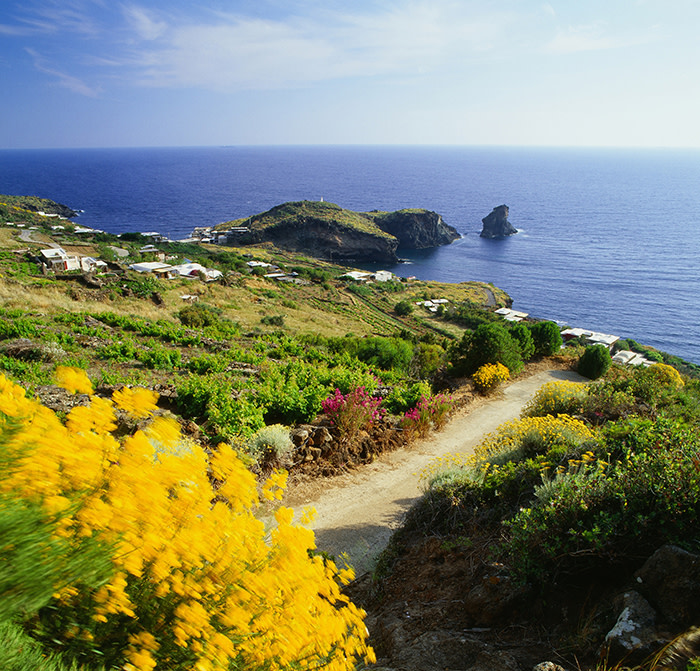
It soon became clear why people rave about Pantelleria, and why the laid-back Italian elite beat a path to its unspoilt shores from Rome and Milan. (Giorgio Armani has had a home there for almost 40 years.) Our host, Giulia, a bohemian former professional basketball player, had just opened Sikelia, the island’s first modern luxury hotel. She told me how she had felt a strange energy from the ground when she arrived 15 years earlier. “It’s like you take a pill, an incredible prescription, and you feel like you are in heaven,” she said.
Neither of us has a spiritual bone in our bodies, but Giulia was on to something. As we read on the bench outside our room under an almond tree, and trundled through pine forests as we sought out swimming spots and caponata in our little Fiat Panda, and gazed up at the Milky Way from the roof of the hotel, cares about imminent parenthood floated away on the breeze. Looking back now, with a wonderful baby bouncing beside my desk at 5.30am as I write this, it feels like a distant but glorious memory.
Doubles from £288; sikeliapantelleria.com
Disappointment: I was in Val d’Isère, in France, for a ski trip with my mum, brother and nephew, travelling with chalet company Powder White. It was lovely, but it was also the last week of the season, and our chalet host brought to his duties the enthusiasm and cheer of a death-row inmate denied his last meal. On day two, he served frozen croissants as we admired the excellent pâtisserie over the road. On day three, Mum hoovered the floor and binned the mouldy food in the fridge. “They can’t fire me now!” Morgan said as we left, wishing we had done it ourselves on day one.
Follow @FTLifeArts on Twitter to find out about our latest stories first. Subscribe to FT Life on YouTube for the latest FT Weekend videos

Comments